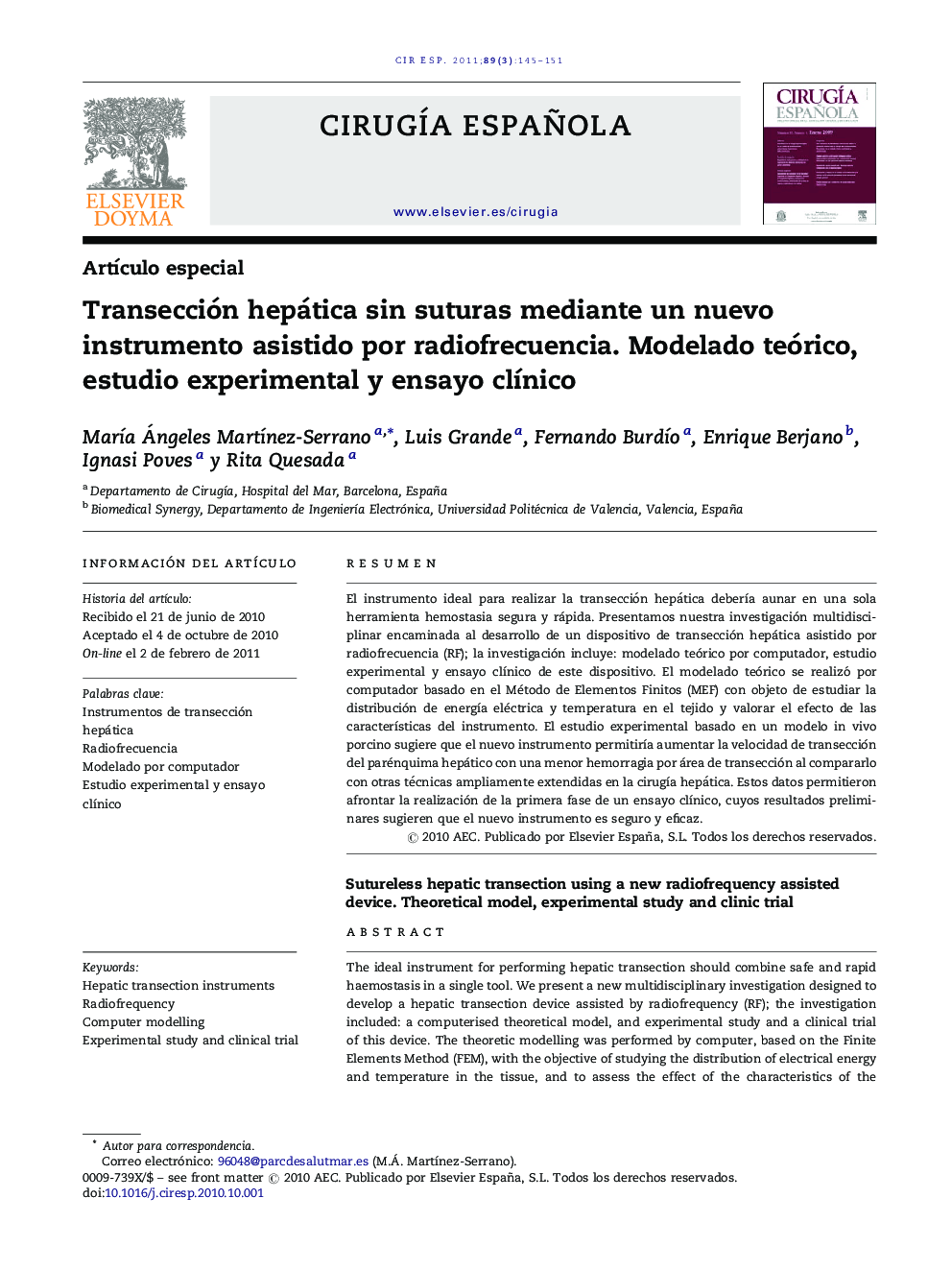| Article ID | Journal | Published Year | Pages | File Type |
|---|---|---|---|---|
| 4253465 | Cirugía Española | 2011 | 7 Pages |
Abstract
The ideal instrument for performing hepatic transection should combine safe and rapid haemostasis in a single tool. We present a new multidisciplinary investigation designed to develop a hepatic transection device assisted by radiofrequency (RF); the investigation included: a computerised theoretical model, and experimental study and a clinical trial of this device. The theoretic modelling was performed by computer, based on the Finite Elements Method (FEM), with the objective of studying the distribution of electrical energy and temperature in the tissue, and to assess the effect of the characteristics of the instrument. The experimental study, based on an in vivo porcine model, suggested that the new instrument would allow the transection velocity of the hepatic parenchyma to be increased with lower bleeding per transection area compared with other techniques extensively used in liver surgery. These data should enable the first phase of clinical trial to be conducted, with preliminary results that suggest that the new device is safe and effective.
Related Topics
Health Sciences
Medicine and Dentistry
Surgery
Authors
MarÃa Ángeles MartÃnez-Serrano, Luis Grande, Fernando BurdÃo, Enrique Berjano, Ignasi Poves, Rita Quesada,
